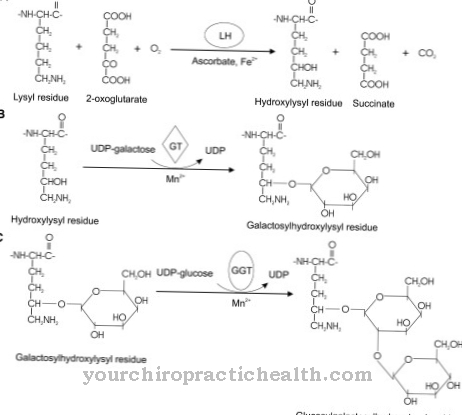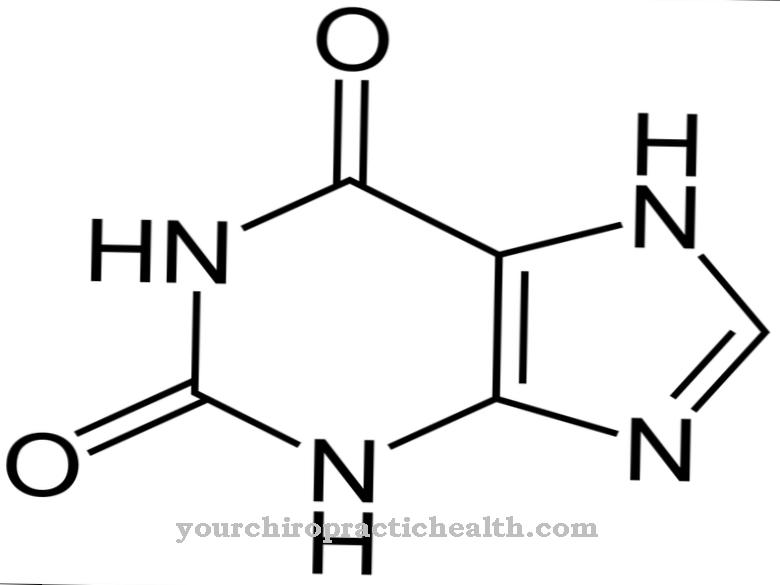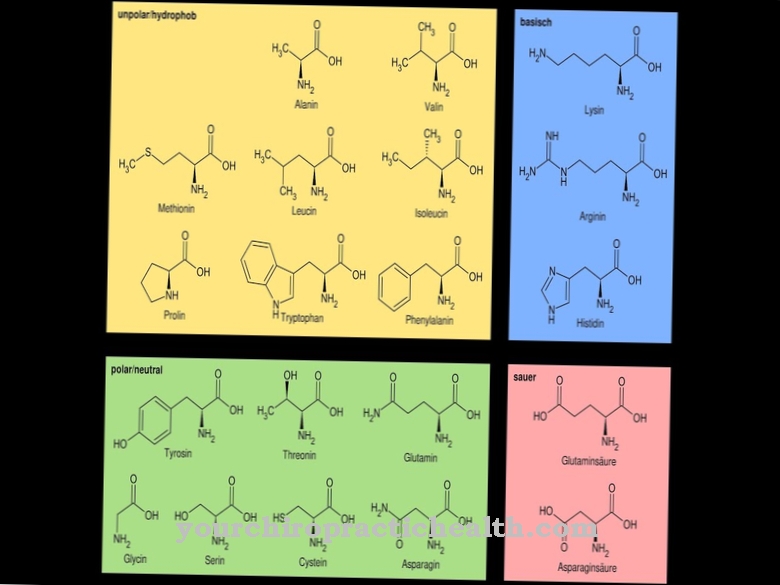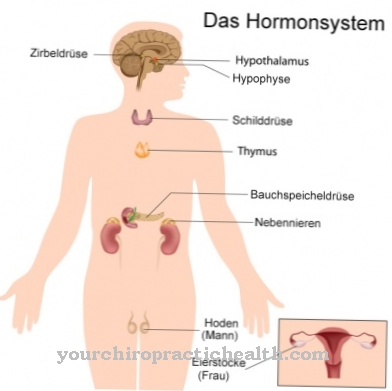Adenosine triphosphate or ATP As the most energy-rich molecule in the organism, it is responsible for all energy-transferring processes. It is a mononucleotide of the purine base adenine and is therefore also a component of nucleic acids. Disruptions in the synthesis of ATP inhibit the release of energy and lead to states of exhaustion.
What is adenosine triphosphate?
Adenosine triphosphate (ATP) is a mononucleotide of adenine with three phosphate groups, which are connected to each other via an anhydride bond. ATP is the central molecule for the transfer of energy in the organism.
The energy is mainly bound in the anhydride bond of the beta phosphate residue to the gammaphosphate residue. If a phosphate residue is removed with the formation of adenosine diphosphate, energy is released. This energy is then used for energy-consuming processes. As a nucleotide, ATP consists of the purine base adenine, the sugar ribose and three phosphate residues. There is a glycosidic bond between adenine and ribose. Furthermore, the alpha phosphate residue is linked to the ribose by an ester bond.
There is an anhydride bond between the alpha beta and gamma phosphate. After removing two phosphates, the nucleotide adenosine monophosphate (AMP) is formed. This molecule is an important building block of the RNA.
Function, effect & tasks
Adenosine triphosphate has a variety of functions in the organism. Its main function is to store and transfer energy. All processes in the body are associated with energy transfers and energy conversions. The organism has to do chemical, osmotic or mechanical work. ATP quickly provides energy for all of these processes.
ATP is a short-term energy store that is quickly used up and therefore has to be synthesized again and again. Most of the energy-consuming processes are transport processes within the cell and out of the cell. Biomolecules are transported to the places where they react and convert. Anabolic processes such as protein synthesis or the formation of body fat also require ATP as an energy-transmitting agent. Molecular transport through the cell membrane or the membranes of various cell organelles are also energy-dependent.
Furthermore, the mechanical energy for muscle contractions can only be made available through the action of ATP from energy-supplying processes. In addition to its function as an energy carrier, ATP is also an important signaling molecule. It acts as a cosubstrate for the so-called kinases. Kinases are enzymes that transfer phosphate groups to other molecules. Mainly it is about protein kinases, which influence their activity through the phosphorylation of different enzymes. Extracellularly, ATP is an agonist of receptors in cells of the peripheral and central nervous system.
It thus participates in the regulation of blood circulation and the triggering of inflammatory reactions. When the nerve tissue is injured, it is increasingly released in order to promote the increased formation of astrocytes and neurons.
Education, occurrence, properties & optimal values
Adenosine triphosphate is only a short-term energy store and is consumed within a few seconds in energy-consuming processes. Therefore, its constant regeneration is a vital task. The molecule plays such a central role that within one day ATP is produced with a mass of half the body weight. Adenosine diphosphate is converted into adenosine triphosphate through an additional bond with phosphate with energy consumption, which immediately supplies energy again by splitting off the phosphate and converting it back into ADP.
Two different reaction principles are available for the regeneration of ATP. One principle is substrate chain phosphorylation. In this reaction, a phosphate residue is transferred directly to an intermediate molecule in an energy-supplying process, which is immediately passed on to ADP with the formation of ATP. A second reaction principle is part of the respiratory chain as electron transport phosphorylation. This reaction only takes place in the mitochondria. During this process, an electrical potential is built up through the membrane through various proton-transporting reactions.
The reflux of protons leads to the formation of ATP from ADP with the release of energy. This reaction is catalyzed by the enzyme ATP synthetase. Overall, these regeneration processes are still too slow for some requirements. During muscle contraction, all reserves of ATP are used up after two to three seconds. For this, energy-rich creatine phosphate is available in muscle cells, which immediately makes its phosphate available for the formation of ATP from ADP. This supply is now exhausted after six to ten seconds. After that, the general regeneration processes must come into effect again. However, the effects of creatine phosphate make it possible to expand the muscle training a little without premature exhaustion.
You can find your medication here
➔ Medicines against fatigue and weaknessDiseases & Disorders
If too little adenosine triphosphate is produced, it leads to states of exhaustion. ATP is mainly synthesized in the mitochondria via electron transport phosphorylation. If the mitochondrial function is disturbed, the production of ATP also decreases.
Studies have shown that patients with chronic fatigue syndrome (CFS) had a reduced ATP concentration. This reduced production of ATP always correlated with disorders in the mitochondria (mitochondriopathies). The causes of the mitochondrial disease included cellular hypoxia, infections with EBV, fibromyalgia or chronic degenerative inflammatory processes. There are both genetic and acquired disorders of the mitochondria. About 150 different diseases have been described which lead to mitochondrial disease.
These include diabetes mellitus, allergies, autoimmune diseases, dementia, chronic inflammation or immune deficiency diseases. The states of exhaustion in the context of these diseases are caused by a lower energy supply due to the reduced production of ATP. As a result, disorders of the mitochondrial function can lead to multiple organ diseases.

























.jpg)

.jpg)
